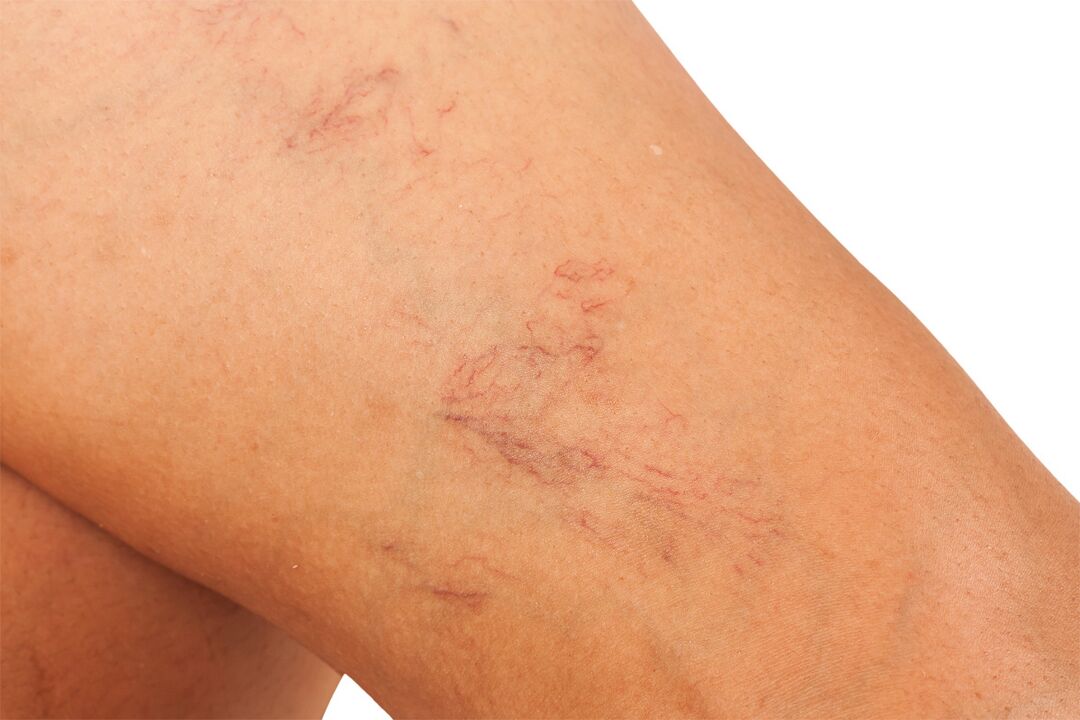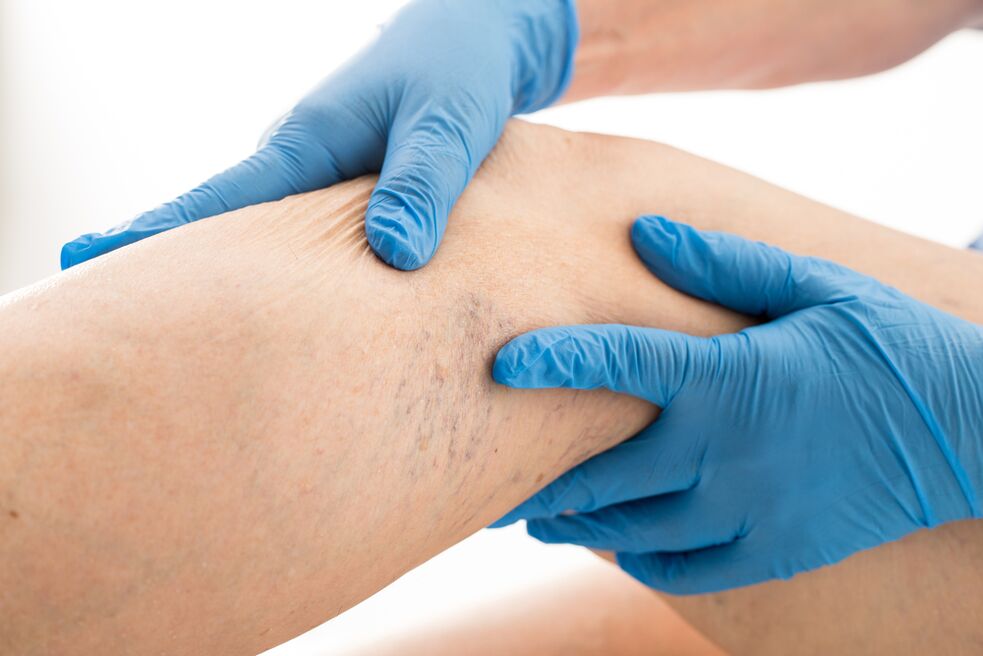Probably every third or even every second person suffers from the legs of varicose veins today or is predisposed to it. This has become a real catastrophe, especially if you consider which legs are invited in today's civilized world. You need to know which varicose veins are dangerous before the occurrence of his first signs.
What are varicose veins

The varicosis on the legs is a chronic disease in which the veins expand and create knots, whereby the blood flow is disturbed and the blood remains in the venous system. In the case of the disease, the lumens of the veins expand, since the blood drainage from the legs in the veins on the legs only fits valves upwards, which does not allow blood to stagnate blood in the legs. When the work of such valves has bothered, the blood moves in a different direction, stagnating in the legs.
The causes of varicose veins on the legs in women and men
Under the causes of varicose veins on the legs, an inherited disposition for this disease are first mentioned. If someone in their family has a varicose vein on their legs, the risk of being too sick for them is extremely large because the disease is due to the hereditary weakness of the venous wall and is the most common causes.
Varicose veins on the legs are mainly female diseases, since wearing shoes with a high head significantly increases the risk. In addition, hormonal shakes are added to the fire during pregnancy or menopause, which also causes the expansion of veins in women.
Most of the time, women of the legs are sick after forty years, but at a younger age it is often found. Most of the time in adolescents or young people, the disease develops due to arterio-venous messages between veins and arteries.
The expansion of the veins on the legs can be found by the nature of the profession in men, which gives the legs a large load. This disease is often sick to people who lead a sitting lifestyle, spend a lot of time to move little. Close uncomfortable shoes and additional pounds, contribute to the formation of stagnation. Liver diseases such as cirrhosis or hepatitis can cause varicose veins on the legs.
This disease is also widespread among athletes, and this indicates that excessive physical activity can also provoke it.
Symptoms and signs
In the early stages, the symptoms of varicose veins on the legs are not obvious, the disease can occur imperceptibly. Or the signs of expanding the veins are obvious - large winding veins on the legs begin to emerge under the skin, but a person has no pain. Vienna can manifest itself, gradually protrude through the skin and manifest itself after hard physical exercises or hard work. It happens that the veins suddenly appear after a person has spent their feet on their feet all day.
However, if they noticed that the veins under the skin became thick, that there were locations with knotted extensions and the veins themselves when standing and falling when they go to bed, they most likely swell on veins.
Another symptom is the swelling of the legs during the day while sitting, standing, walking and decrease in the swelling in the lying position.
A light feature of the disease is also the pigmentation of the inner surface of the legs - the skin is compressed, becomes less elastic and receives a painful shine. The hair falls out in areas with such skin.
Varicosis is also characterized by a constant feeling of tiredness in the legs, pain and combustion. One person is quickly tired, sometimes cramps are found.
Diagnostics and treatment: medication, operations, folk remedies
The varicose is diagnosed when examining a surgeon by a specialist and on the basis of data from the uzadern. Phlebography is also carried out, i. e. contrasting coloring substances are inserted into the blood, according to which veins are examined.
The treatment depends on the stage in which the disease is and whether the disease is accompanied by complications. Treatment can be based on conservative and surgical methods. It is conservative to wear stockings or pantyhose, the consumption of medication with internal and external use. Conservative treatment methods also include sclerotherapy and laser radiation. In particularly complex cases, the veins are surgically removed.

A person suffering from varicose veins of the legs should know that if the leg is suddenly increased in the leg, fever and skin compression, it is urgently called to call a doctor. Such an attack can be accompanied by shortness of breath, a feeling of lack of air, weakness and bleeding.
Expert opinion: How is it related to varicose veins? Thrombus inflammation on thrombophlebitis occurs through an extended vein. This disease can occur with increased body temperature. Part of the thrombus can come loose and get into the lung artery, which leads to shortness of breath and further development of serious symptoms of life.
Not in such cases with treatment at home - call a doctor.
The most effective and radical method for treating varicose veins of the legs is of course operations. The operation takes up when conservative treatment methods are ineffective. The essence of the operation boils down to the fact that the surgeon removed veins expanded by small cuts on the skin. Then the leg is thoroughly bound, and after a few hours the patient can stand completely and even go. This may be the only guaranteed way to get rid of the serious consequences of the disease.
People's funds can help with traditional methods or relieve the patient's condition. The main components when creating medical ointments are:
- Horse chestnut;
- Kalanchoe;
- Sagebrush;
- white pasture bark;
- Mokrin;
- Celandine;
- Kohl.
Popular products based on animal fat, apple cider vinegar, beekeeping products (honey, propolis), body, sound and other components also help to heal the disease.
The consequences of varicose veins
Varicose veins of the legs cannot be left alone, it has to be treated because this disease can lead to many unpleasant and sad consequences. Therefore, varicose veins can be done by eczema and dermatitis - inflammatory skin diseases on the legs, the cause of which is precisely the stagnation of venous blood. Eczema is characterized by the occurrence of redness on the skin, and the edges of this redness are uneven, the skin appears itching and cracks or bubbles at these places.
The eczema of the cramp can in turn develop into a trophic ulcer. A trophic ulcer is also a complication of varicose veins - it is an ulcer that does not heal on the skin in the lower leg for a long time. A trophic ulcer begins with a flat ulcer, which is marked on the floor by a bloody or transparent liquid. This is an extremely painful wound that can thoroughly ruin a person's life - leads to a violation of life, sleep.
One of the most common complications of varicose veins on the legs is the throm -blue libratis, i. e. inflammation of the veins, accompanied by the formation of a blood clot. Thrombophlebitis is usually accompanied by severe pain when walking, fever, reddening of the skin and the formation of seals. In the case of thrombophlebitis, the venous fracture of the expansion system is possible, whereby the bleeding is formed. In this case, it is necessary to call a doctor immediately.

























